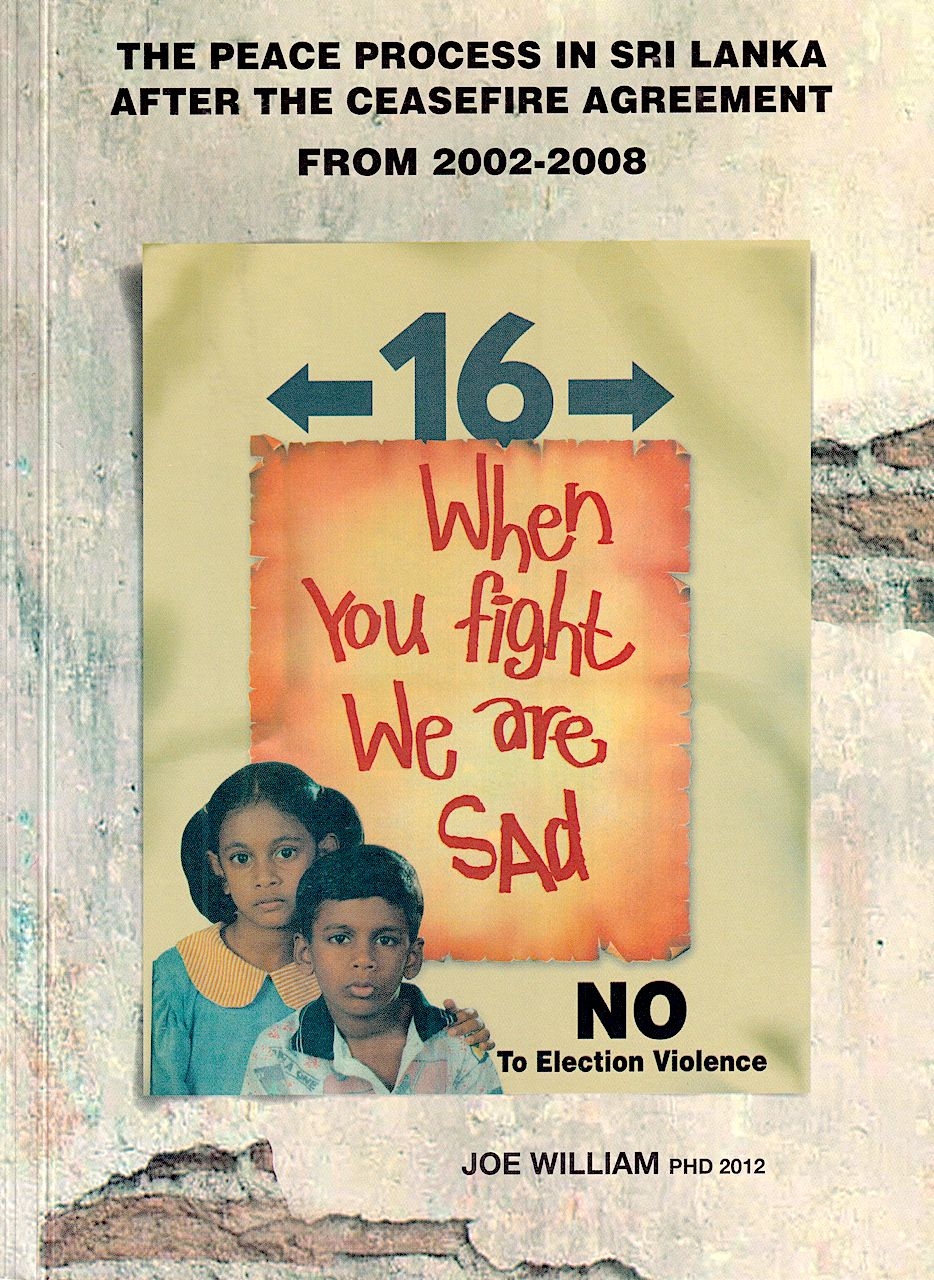The book by NPC chairman Dr. Joe William entitled The Peace Process In Sri Lanka After The Ceasefire Agreement From 2002-2008: Systemic and its Application to the Peace Process in Sri
Lanka is about applying a specific conflict resolution theory, Systemic Conflict Transformation (SCT), an assessment of the background to the conflict since independence and the difficulties
encountered by the Norwegian-sponsored peace process from 2002 to 2008.
It attempts to show the way peace has to be forged at many different levels than only to deal with the immediate causes that led to the conflict in the first place. It sees the systemic approach by placing the conflict at the center of gravity in the conflict system.
Insights from systems analysis provides a deeper understanding of the development of deadly conflicts. This approach is not a panacea but offers a relatively unexplored path that points towards policy recommendations. The research is original from the perspective of its analysis based on SCT principles on why the Norwegian facilitated peace process failed and to what extent can SCT theory enable the peacebuilding community to be mobilised.
Chapter 2 titled Conflict Resolution and Systemic Conflict Theory provides a brief sketch of some the best known conflict resolution models, highlighted to introduce the concept of SCT, which is the sub-focus of the research in analysing the Norwegian-facilitated peace process in Sri Lanka.
Chapter 3 gives an illuminating background to the conflict, which helps set the context and the key actors providing a historical overview of the post-independence political processes that generated and sustained the Sri Lankan conflict concluding with the events leading up to the signing of the Ceasefire Agreement (CFA). This is followed by an examination of the different stages of the peace process from 2002 to 2008, its collapse and ends with the abrogation of the CFA.
The chapter also provides an interesting analysis of Sinhala and Tamil nationalism and its ideological role in the conflict debate. One other significant issue highlighted is the history and status of Muslim communities. The focus is to grapple with issues that could potentially move to a conflict transformation process, shift root and proximity causes of conflict to interaction and independence, and to help focus analyses on solution rather than just reflecting on problems and options for change.
Systems Thinking thus becomes a very powerful way of uncovering root causes because it illuminates the non-obvious interdependencies among complex organizational and external factors. Thinking systemically helps people recognise how they are in part responsible for the problems they are trying to solve. They can learn how their well-intentioned actions often produce unintended consequences that actually reduce their effectiveness in the long run.
Chapter 4 titled Systemic Analysis of the Peace Process from 2002-2008 is the substantive core of the thesis where a systematic analysis of the peace process from 2002-2008 is provided. The chapter identifies security, political social and economic factors as the underlying and contributing factors to the conflict, citing the nature of the state, its political culture, the institutional framework of policy, uneven development patterns and conflicting patterns not been affected by the process. The chapter describes these aspects in great detail including issues of human rights violations by both sides of the conflict, regional and geopolitical interests, failed attempts at constitutional change and the ethnicisation of political institutions.
Chapters 5 and 6 provide a study of the NPC and the role it has played in peacebuilding, especially in supporting the peace process using systems thinking. The chapters show the principles and strategies adopted by NPC in peacebuilding interventions. In some ways the study shows NPC’s evolution of its approaches and strategies which currently emphasises pluralism, trust building and addressing the political roots of the conflict.
While summarising the essence of the book, the final chapter suggests and expands on possible ways forward, which include the need to address the right people; not to come up with a single model to deal with the complex dynamics of the process of conflict and peacebuilding; the need for a confluence of interventions and political transformation and compromise; empowering communities and the adoption of systemic thinking. Finally, it appeals for the promotion of social healing and moving beyond the area of academic research and also to heed to the voices emanating for justice from thousands of unmarked graves dotted across the island as a result of conflicts over the past three decades.
This book is ahead of its times by a decade when activists of the aragalaya proposed a system change that aimed to address the lead up to the systems breakdown experienced in 2022. The strength of the book is that it provides an objective assessment of the realities of the period under review and the lessons learned, which can be applied by the tens of thousands who congregated in Galle Face Green and elsewhere in 2022, especially university students and others.
The book is translated into Sinhala and Tamil and is an essential resource for those working towards promoting systems change at the national level and rooted in shared goals to achieve lasting improvement to solve social problems facing Sri Lanka at local, provincial and national levels, which has so far eluded us. It will also be of great value if this thesis could be updated in a future edition as a book and structured and formatted accordingly with the insertion of a subject index and author index.
Peter Rezel

